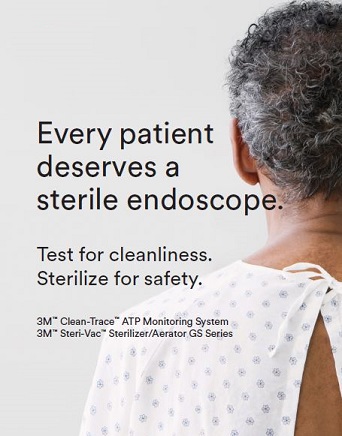A higher standard of care in flexible endoscope reprocessing
A higher standard of care in flexible endoscope reprocessing
A higher standard of care in flexible endoscope reprocessing
Is Inadequate Reprocessing the Problem?
-

What is clear right now is that there is no single root cause and no single "fix" for the challenges of endoscope reprocessing. Studies show that even with the best of intentions, current reprocessing guidelines are not always followed to the letter.
A study published online Aug 5 in AJIC1 provides evidence that contamination remains even when observers document that each and every step is completed properly. Not only that, but this study showed that contamination remains even after cleaning (or multiple rounds of cleaning and disinfection) on colonoscopes and gastroscopes. Thus, it is clear that duodenoscopes are not the only type of flexible endoscope that requires further attention.
Three things to do today to improve your endoscope reprocessing program
- Understand the two key tasks involved in endoscope reprocessing.
- Develop a quality control program that includes routine cleaning monitoring with a rapid cleaning indicator that provides a clear pass/fail result. Refer to recently updated standards from organizations like AORN,2 AAMI,3 and SGNA.4
- Audit your endoscope procedure history. Endoscopes used to enter sterile tissue or the vascular system are critical items in Spaulding™'s classification, meaning that sterilization is required. Terminal sterilization with ethylene oxide is a validated reprocessing method described in the IFUs for many models of flexible endoscopes, including high-risk duodenoscopes.
To learn more about this topic, download the white paper, “An Approach to Improving the Quality and Consistency of Flexible GI Endoscope Reprocessing.”
1 Ofstead CL, Wetzler HP, Doyle EM, et al. Persistent contamination on colonoscopes and gastroscopes detected by biologic cultures and rapid indicators despite reprocessing performed in accordance with guidelines. AJIC 2015;43(8):794-801. doi:10.1016/j.ajic.2015.03.003.
2 AORN Guideline for Processing Flexible Endoscopes
3 AAMI ST91:2015 Flexible and semi-rigid endoscope processing in healthcare facilities
4 Society of Gastroenterology Nurses and Associates, Inc. (2016). Standards of Infection Prevention in Reprocessing Flexible Gastrointestinal Endoscopes.
[Practice standard].
Interested in speaking to a 3M Sales Representative about your endoscope reprocessing needs?
Register Here to Download the Whitepaper
The brands listed above are trademarks of 3M.


